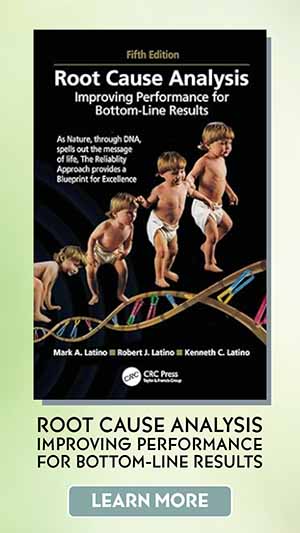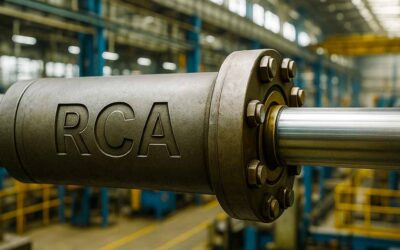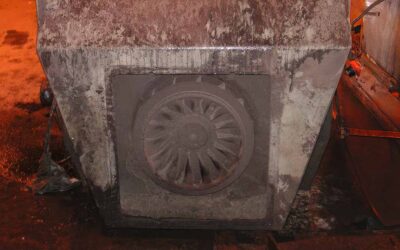I’ve always been amazed by plant-floor workers’ knowledge and problem-solving capability. Skilled and knowledgeable tradespersons and operators know what’s happening at a site. They’re an extremely valuable resource in our quest to run reliable and safe operations. Unfortunately, I’ve been equally amazed but unimpressed by managers and engineers who don’t leverage this resource.
Too many organizations only employ tradespersons and operators “from the neck down” and fail to take advantage of plant-floor teams’ experience, knowledge, and creativity.
During root-cause analysis (RCA) events, I’ve often (too often, that is) heard from operators and maintainers that they had anticipated the problem, but the head office simply didn’t ask or hadn’t paid attention when they raised warnings.
Big problems that warrant RCA are usually the byproduct of small problems that we didn’t attend to when we could have and should have. The answer is to instill a “why-why” culture that actively engages all the knowledge, experience, and creativity that plant-floor personnel bring to the table on a daily basis to prevent large disruptive events that demand RCA from happening.
Engaging Plant-Floor Teams for Continuous Improvement
A why-why culture is based upon why-why analysis, sometimes called five-why analysis, apparent-cause analysis (ACA), or shallow-cause analysis (SCA). Make no mistake: These scaled-down cause-analysis processes are no replacement for RCA when solving significant or complex problems.
When, however, they’re routinely practiced on the plant floor, every hour of every day, in a why-why culture, these tools can reduce the number of small situations that could compound and evolve into major problems.
Five-why analysis was originally created by Sakichi Toyoda (Toyota) as a tool to drive Kaizen (continuous improvement) as a part of the Toyota Production System (TPS). In essence, one asks the question five times in succession to move from a failure mode or effect (what) to the failure cause (why).
Of course, one must have a reasonable understanding of the mechanism (how) to bridge the gap between the failure effect and its cause.
I prefer to call this process “why-why analysis” because, in my experience, some problems require asking “why” seven times to reach a satisfying solution, while other issues can be solved with three “whys.” The point, though, is the same.
Unlike five-why or why-why analysis, which applies linear logic to get from an observed effect to its cause, RCA is a more holistic process. When conducting RCA, one starts with the universe of all possible root causes. (The failure cause taxonomy defined in the freely available DOE NE 1004 standard guide for conducting root cause analysis is my starting point).
With the universe of all possible root causes, the analysis team systematically eliminates causal factors that they know did NOT contribute to the present failure. This leaves a manageable (it is hoped) remaining set of failure causes that were known to contribute to the present event, or that can’t be reasonably excluded.
In most instances, “event” is the operative word. In my opinion, that’s a problem. We typically employ RCA, why-why analysis, as an event in response to undesirable reliability, safety, and/or environmental performance situations.
But why must the process be event-based? Why can’t it be engrained in the culture, as was intended by Sakichi Toyoda and Taichi Ohno (the mastermind of TPS)? Their vision was to move cause analysis to the plant floor and engage the experience, knowledge, and creativity of operators and tradespeople as a matter of routine.
The Role of Why-Why Analysis in Everyday Operations
For example, whenever an operator conducts an inspection route and identifies an anomaly, there’s an opportunity for why-why analysis. Likewise, whenever a tradesperson completes a corrective maintenance task, there’s an opportunity for why-why analysis.
Whenever a tradesperson encounters a job that’s difficult to complete due to lack of access, inadequate work instructions, incomplete tools specification, and/or wrong or missing parts on the bill of materials (BOM), there’s an opportunity for a why-why analysis.
The objective is to solve small problems and make incremental improvements every hour of every day to prevent significant disruptive events from getting off the ground.
Empowering Operators and Tradespeople to Drive Reliability
Are you only employing plant-floor team members from the neck down? If so, implement a why-why culture and begin harvesting the benefits of their invaluable background and know-how. The plant will be safer and more reliable, and its plant-floor team members will feel appreciated for the opportunity to contribute.
Originally published in The RAM Review.











